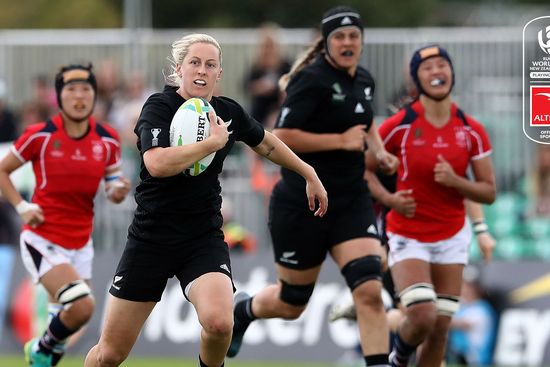Setting the Stage for Rugby World Cup 2029 with a Reimagined International Calendar
In a move that signals a significant strategic shift, World Rugby has once again turned its attention to the architecture of women`s international rugby. The governing body has announced the launch of the WXV Global Series, a comprehensive overhaul designed to revolutionize the women`s test match calendar and establish a clearer, more competitive pathway to the sport`s pinnacle event: the Rugby World Cup 2029 in Australia.
For those familiar with World Rugby`s penchant for calendar adjustments, this might seem like another iteration in the ongoing quest for optimal scheduling. However, officials emphasize that this isn`t merely a tweak; it`s a fundamental reimagining, effectively retiring the previous WXV format to introduce a more structured and ambitious global competition.
The WXV Global Series: A Two-Tiered Approach
The newly unveiled WXV Global Series is designed to feature 18 national teams, strategically divided to ensure meaningful competition at various levels. This tiered system aims to foster growth, provide exposure, and ensure financial sustainability for participating unions.
Tier 1: The Global Elite – Top 12 Nations
- Home and Away Series: The twelve leading teams in women`s rugby will engage in a robust schedule of home and away matches. This marks a crucial step towards normalizing regular, high-stakes international fixtures in familiar territories.
- Unified International Window: All matches for these top teams will take place within a single, dedicated international window spanning September and October. This consolidation aims to minimize conflicts and maximize player availability.
- Match Volume: Each participating nation can expect to play between four and six test matches during this period, offering invaluable experience and development opportunities.
- Commercial Empowerment: Crucially, national rugby unions will retain the commercial rights for their home games. This is a significant economic incentive, allowing unions to capitalize directly on the growing interest in women`s rugby and reinvest in their programs.
Tier 2: Developing Nations – Teams Ranked 13th to 18th
For the nations currently positioned between 13th and 18th globally, World Rugby has devised a distinct, fully supported structure:
- Centralized Tournament: These teams will compete in a centralized tournament model. This minimizes logistical burdens and costs for developing unions.
- Full Funding by World Rugby: In a clear commitment to global development, World Rugby will fully finance these tournaments, removing a major financial barrier for participation.
- Scheduled for Growth: These centralized events are slated for 2026 and 2028, providing consistent high-level competition for these aspiring nations.
The Road to Rugby World Cup 2029: A Clearer Qualification Pathway
One of the WXV Global Series`s primary functions is to integrate seamlessly into the qualification system for the Rugby World Cup 2029 in Australia. World Rugby is laying out a defined pathway, ensuring that performance within the new series directly impacts a nation`s World Cup aspirations:
- Automatic Qualifiers: Four teams have already secured their berths by reaching the semi-finals of the Rugby World Cup 2025.
- Regional Excellence (2027): Eight additional spots will be determined through competitive regional tournaments held in 2027, emphasizing continental strength.
- World Ranking Inclusion: Two places will be allocated based on world rankings, rewarding consistent performance over time.
- WXV 2028 Play-off: The final qualification spot will be contested through the WXV-2028 tournament for the second-tier group. This adds significant stakes to these centralized competitions, transforming them into vital qualification battlegrounds.
A Broader Landscape for Women`s Rugby
This comprehensive reform is set to deliver more than 100 international matches over the three-year cycle from 2026 to 2028. This substantial increase in competitive opportunities underscores World Rugby`s commitment to accelerating the growth and professionalization of the women`s game.
Looking further ahead, the 2027 calendar will also feature additional inter-regional matches. These fixtures are specifically designed to provide competitive opportunities for national teams not involved in the inaugural tour of the Women`s British & Irish Lions, ensuring that even more nations benefit from increased international exposure.
Perspective: While World Rugby`s calendar reforms have, at times, been met with a healthy dose of skepticism (often concerning the men`s game), this strategic push for women`s rugby appears to be a focused and largely welcomed development. The blend of increased match volume, financial support for developing nations, and a transparent World Cup pathway suggests a serious commitment to building a robust global ecosystem for the sport.
Conclusion
The WXV Global Series marks a pivotal moment for women`s international rugby. By creating a more defined, competitive, and financially supported structure, World Rugby aims to elevate the sport to unprecedented heights. With clearer pathways, increased match opportunities, and a direct link to World Cup qualification, the stage is set for a thrilling era of growth, competition, and ultimately, more compelling rugby for fans worldwide. The journey to Australia 2029 has just become a whole lot more interesting.







